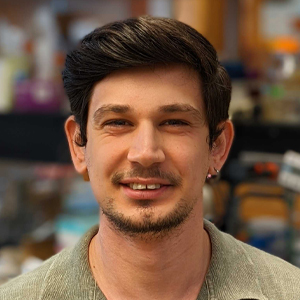How bacteria inhibit gene expression
Bacteria adapt to environmental changes by regulating their metabolism. The best way to do this is to change the gene expression. Proteins called transcription factors take care of this job and help organisms respond to change.
The transcription factor CarD is conserved among several bacterial lineages and reacts with other proteins to prevent or initiate gene expression. Although researchers know the initiating mechanism of CarD, they do not yet understand how it inhibits gene expression. Understanding the complete mechanism of CarD activity may help scientists develop new approaches to combat bacteria.

Dennis Zhu and Christina Stallings, researchers at the Washington University School of Medicine, study the inhibiting mechanism in Mycobacterium tuberculosis, or Mtb. They recently showed which factors affect CarD’s activity in gene expression.
The RNA polymerase, or RNAP, enzyme binds to DNA to promote transcription. RNAP binds a promoter sequence to start transcription, and the RNAP–promoter interaction is called RNAP-promoter open complex, or RPo. Previous studies showed that CarD stabilizes RPo and initiates RNAP’s activity. However, using RNA sequencing, Zhu and Stallings showed that altering the activity of CarD can cause downregulation and upregulation of some genes.
According to Zhu, their findings published in the Journal of Biological Chemistry are broadly applicable for other bacterial transcription factors as well.
“I believe what makes our study unique is that we approached it with a constrained hypothesis that the outcome of CarD regulation on mycobacterial transcription is dependent on RPo stability,” Zhu said. “Other studies of RNAP-binding transcription factors have explored the natural promoter space of a bacterium and have performed similar promoter bashing to identify regulatory sequences.”
Unlike previous studies, Zhu and Stallings observed the effect of CarD under different promoters. They showed that it has an inhibitory effect on promoters that already have highly stable RPo. This is the first demonstration of CarD’s transcriptional repression activity, and they believe that this is how CarD inhibits some genes.
The researchers did all these experiments in the controlled conditions of a laboratory. However, a bacteria’s natural environment is different. “The main limitation of studies like ours is the gap in understanding between the next-generation sequencing data sets that we gather from bacteria and the mechanistic details from our in test tube assays,” Zhu said. “So many things are happening within the bacterium such as salt conditions, other proteins, chromosome architecture, translation, which we cannot fully capture in an in vitro transcription assay.”
The next step for the group is creating a bridge between findings in the lab and more natural settings. CarD is a stress-response protein. That is, when bacteria feel environmental stress such as lack of nutrition or DNA damage, CarD is downregulated or upregulated, respectively.
Zhu and colleagues got bulk RNA sequencing data sets by exponentially growing Mycobacterium tuberculosis cells in a nutrient-rich media. “It would be interesting to explore how certain stress conditions, particularly nutrient starvation and DNA damage, affect CarD’s ability to regulate,” he said.
Enjoy reading ASBMB Today?
Become a member to receive the print edition four times a year and the digital edition monthly.
Learn moreGet the latest from ASBMB Today
Enter your email address, and we’ll send you a weekly email with recent articles, interviews and more.
Latest in Science
Science highlights or most popular articles

Fueling healthier aging, connecting metabolism stress and time
Biochemist Melanie McReynolds investigates how metabolism and stress shape the aging process. Her research on NAD+, a molecule central to cellular energy, reveals how maintaining its balance could promote healthier, longer lives.

Mapping proteins, one side chain at a time
Roland Dunbrack Jr. will receive the ASBMB DeLano Award for Computational Biosciences at the ASBMB Annual Meeting, March 7–10, just outside of Washington, D.C.

Exploring the link between lipids and longevity
Meng Wang will present her work on metabolism and aging at the ASBMB Annual Meeting, March 7-10, just outside of Washington, D.C.

Defining a ‘crucial gatekeeper’ of lipid metabolism
George Carman receives the Herbert Tabor Research Award at the ASBMB Annual Meeting, March 7–10, just outside of Washington, D.C.

The science of staying strong
Muscles power every movement, but they also tell the story of aging itself. Scientists are uncovering how strength fades, why some species resist it and what lifestyle and molecular clues could help preserve muscle health for life.

Bacteriophage protein could make queso fresco safer
Researchers characterized the structure and function of PlyP100, a bacteriophage protein that shows promise as a food-safe antimicrobial for preventing Listeria monocytogenes growth in fresh cheeses.

